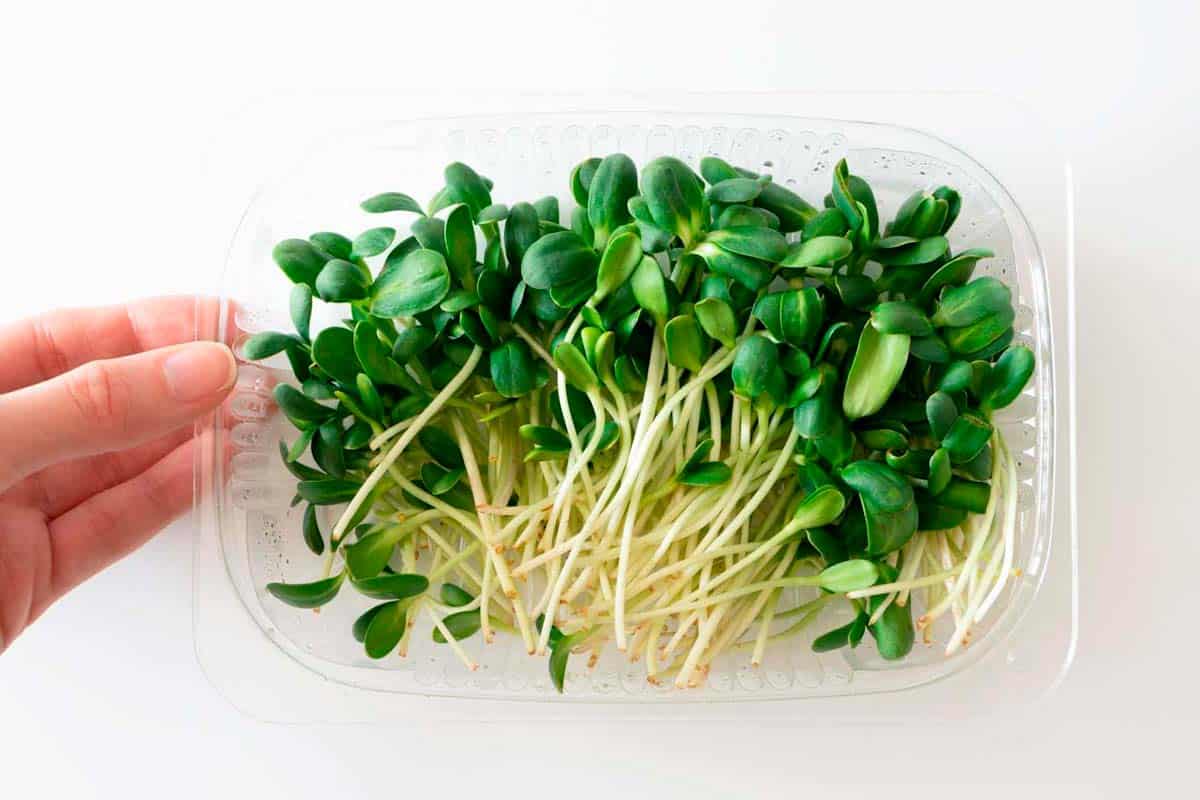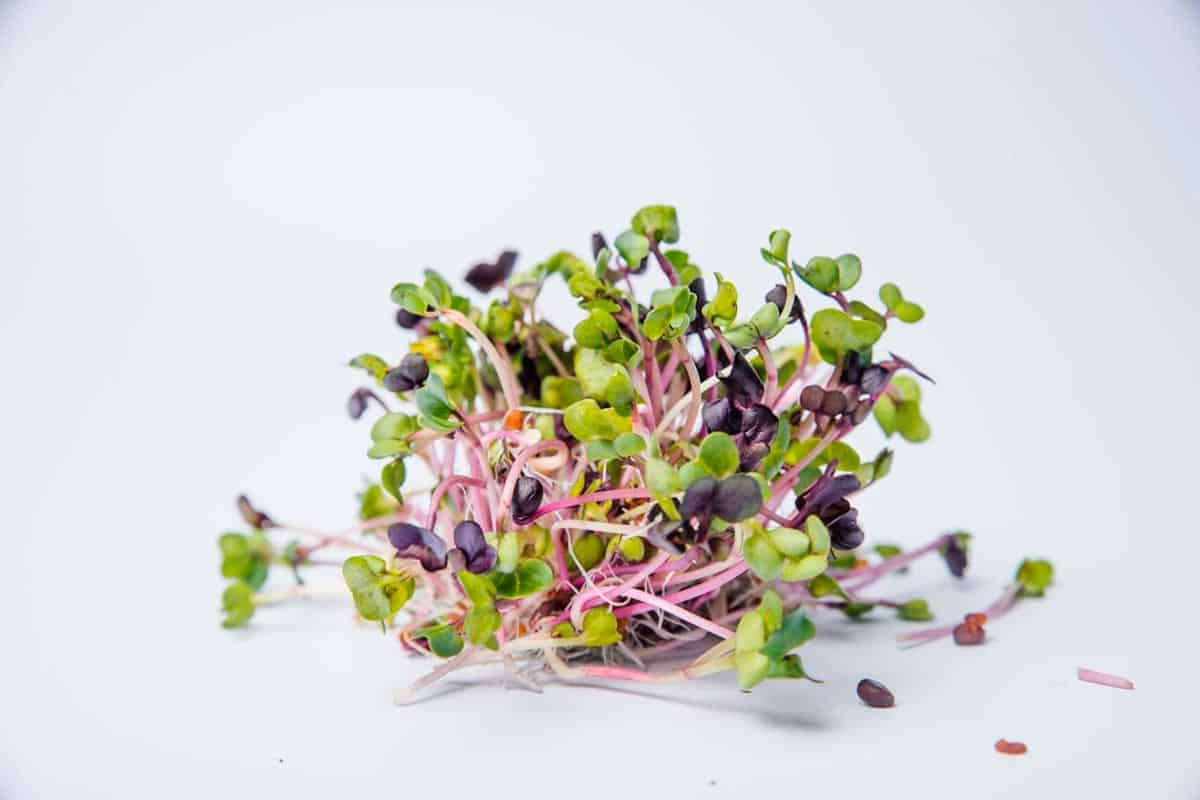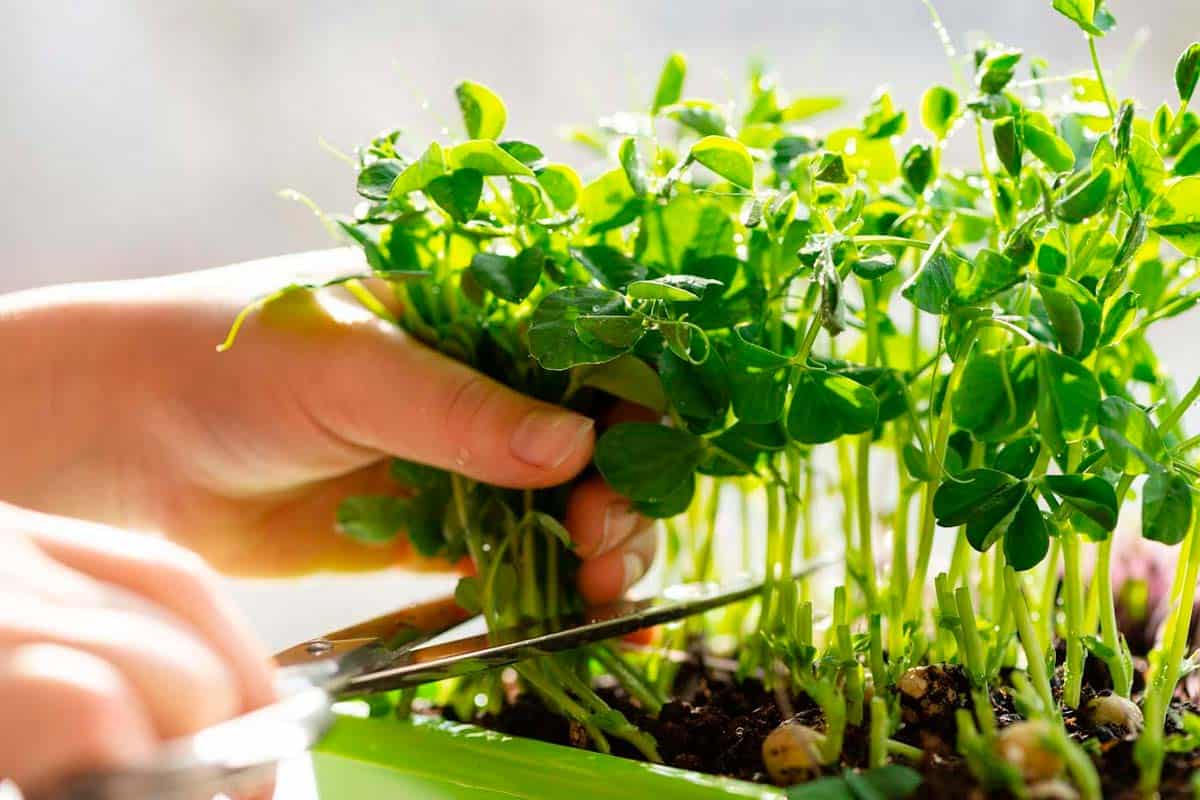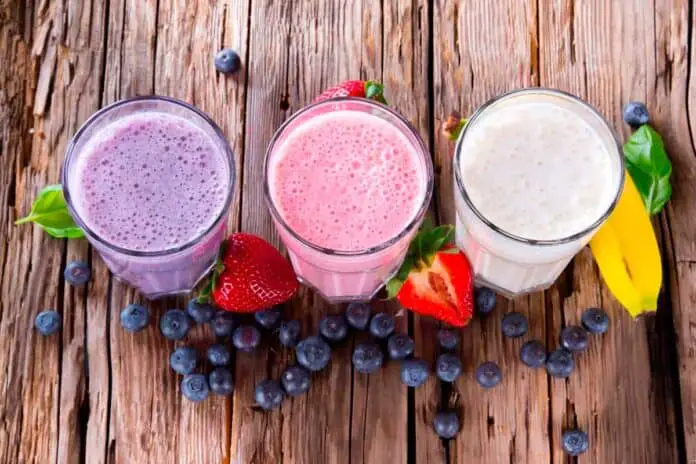Microgreens are tiny, nutritious, and delicious; these mini plants sure pack a punch and do wonders for your diet. Because of their versatile uses, one can eat them raw or mix them with food, but how about some smoothies for deserts? These three microgreens I’m about to mention are the best microgreens for smoothies:
Sunflower, radish, and pea microgreens provide a lasting taste when added to smoothies. They also offer excellent nutritional value for your health; an added bonus to the smoothie’s already great dietary value.
This article explores the three of the best microgreens for smoothies out there. We also add a recommended smoothie recipe as a cherry on top of their nutritional content.
Microgreens are versatile and all, but some do better than others. While many microgreens are better for savory dishes, a particular bunch are better for raw consumption. Below are the three types of microgreens that goes well with making smoothies, considering nutritional content, versatility, and taste.
The Three Best Microgreens For Smoothies
- Sunflower microgreens
- Radish microgreens
- Pea microgreens
The Smiling Sunflower: A Microgreen That’s Nutting With Flavor!
Sunflower microgreens are easy to cultivate, fast-growing, and pack a relatively indiscernible nutty punch. The sunflower microgreen is often seen as a garnish to most deserts, and for a good reason!
This type of microgreen has a malty, nutty taste with a touch of spinach. These micros can also provide a slight tinge of bitterness to balance things around. However, the taller these sunflower microgreens get, their bitter flavor is more apparent.
Nutrition Facts: Sunflower Microgreens
Many people often consider the sunflower microgreen a flavorful favorite, but many don’t know it is as nutritious as other microgreens. In an archive by the United States Department of Agriculture (USDA)’s food data central, organic sunflower microgreens together with basil microgreens (in a 100-gram serving) contain a high amount of energy, and protein. It has no trace amount of fats, and there is zero gram of sugar!
Below is a complete list of all the nutritional facts inside a sunflower microgreen. (source)
Nutrition Facts – Sunflower Microgreen (With Basil Added) In A 100 Gram Serving
- 28 kcal energy
- 2.21 g protein
- 0 g fat
- 4.42 g carbohydrates
- 2.2 g dietary fiber
- 0 g sugar
- 88 mg calcium
- 15.91 mg iron
- 66 g magnesium
- 66 mg phosphorus
- 298 mg potassium
- See the complete extensive list here for more information.
Sunflower Microgreen Smoothie
Now after reading all of that, who wouldn’t be craving a sunflower microgreen smoothie? A sunflower microgreen smoothie may be the perfect end to a savory meal. Below is a quick and easy guide to preparing your first microgreen smoothie, using the best microgreens.

Ingredients For Sunflower Microgreen Smoothie
- 1/2 cup sunflower microgreens
- One piece of banana (frozen)
- One piece apple
- Some drops of lemon juice, optional
- Spinach or pea microgreens, one cup, optional
- Hemp seeds, optional
Directions
- Chop the apples into manageable pieces. Do the same thing with the banana. Using a frozen banana gives the smoothie a more filling texture, and it chills!
- Add all the ingredients together in a blender.
- Add some cold water to thin out the blend, but only as much to keep it filling. We are making a smoothie and not juice!
- Blend until the mixture becomes foamy and smooth.
- Consume it directly! If you want to keep it for later, then store it in the refrigerator. It lasts for about 24 hours when kept cold.
More Nutrition Facts
- Bananas are a healthy source of fiber, potassium, vitamin B6, vitamin C, antioxidants, and phytonutrients. – Source
- Carrots are a particularly good source of beta carotene, fiber, vitamin K1, potassium, and antioxidants – Source
- Apples have multiple health benefits, and they are high in fiber, vitamin C, and various antioxidants. – Source
An Adventurer’s Spice: Radish Microgreens
Radish microgreens are a peculiar smoothie addition that never leaves you hanging. A cup of radish microgreen is ultra-packed with essential nutrients and savory flavor notes. The radish microgreen is a perfect addition to an avocado toast, and it can be your ideal smoothie ingredient as well!
Many think that radish microgreens are not the best for smoothies, but the appeal of radish microgreens is that they have a pretty unique taste that may come as a great addition to your smoothie. Although many people use radish microgreens as a garnish for savory food, they can be an excellent substitute for common microgreens such as kale. The radish microgreens are for those wanting an adventure!

Nutrition Facts: Radish Microgreens
The radish microgreen is high in vitamin C, energy, and carbohydrates.
Radishes are also rich in antioxidants and minerals like calcium and potassium. Since radishes are packed with vitamins and minerals without many carbs or calories, they are a healthy option to add to your diet.
Nutrition Facts – Radish Microgreen contains
- Calcium
- Vitamin C
- Riboflavin
- Niacin
- Thiamine
- Vitamin B6
- Folate
- Potassium
- Iron
- Manganese
Radish Microgreens Smoothie
You can add radish microgreens to smoothies with other microgreens at hand. Unlike the sunflower microgreens, which stand out as a remarkable standalone microgreen smoothie ingredient, radish microgreens are more of a support microgreen. They are like sugar and salt of the microgreen world, and you may find them too strong to consume by themselves, but almost all dishes taste bland without them.
When added to other common microgreens, the radish microgreen creates a perfect burst of flavor that will leave you wanting more. Below is a recipe for a radish microgreen mix smoothie.
Ingredients For Radish Microgreen Mix Smoothie
- A mix of radish microgreens, bok choy microgreens, kohlrabi microgreens, pea shoot microgreens, and broccoli microgreens, 1/2 cup
- One very ripe banana (ideally frozen)
- Pineapple, a few pieces
- 3/4 cup of orange juice, unsweetened (alternatively use fresh and peeled oranges)
- Chia seeds to taste
Directions
- Slive the banana and the pineapple. Peel the orange also or pour in the orange juice.
- Add all the ingredients to a blender.
- Blend until there are no visible lumps. Wait for a foamy, smooth texture.
- Serve and drink cold! It lasts for up to 24 hours in the fridge.
More Nutrition Facts
- Oranges are high in fiber, and a single orange (140 grams) provides around 10% of the daily requirement. Oranges are also high in minerals, such as vitamin C and folate, and have 92 percent of your daily vitamin C needs. Oranges are nothing but a sunshine fruit filled with health benefits. (source)
- Pineapple is high in vitamin C and loaded with vitamins and antioxidants. They are low in calories making them ideal for any healthy diet!
The King Of Versatility: Pea Microgreens
Pea microgreens are starchy, and earthy, with deep undertones of sweetness. Because of this vague, mild taste, pea microgreens can go well with almost any kind of food. While many people prefer pea microgreens as an addition to their dishes, enhancing a salty cuisine, pea microgreens can sit well with your smoothie!
Many call pea microgreens the king of versatility because they adapt to salty and sweet dishes. The pea microgreen is perfect for your smoothie because it adds depth and a sense of fullness to it. It acts like rice in Asian cuisine, it doesn’t taste much, but Asian cuisine isn’t Asian cuisine without it.

Nutrition Facts: Pea Microgreens
Like the other two microgreens discussed in this article, Pea microgreens are full of nutritional benefits despite their petite size. With pea microgreens by your side, your smoothie will be a lot more nutritious, filling, and delicious at the same time!
According to a study made and published in ScienceDirect, Pea microgreens are filled with health benefits:
- Pea shoots are a good source of dietary fiber, vitamin C, E, and A, and potassium.
- They have high water (91.5%) and low fat (0.3%) and carbohydrate (1.9%) contents, being a good source of dietary fiber (2.1%).
A Wonderful Mix: Pea Shoot Mircogreen Smoothie
Out of all the recipes here, the pea shoot microgreen smoothie is probably the most colorful one, and it is also the most varied when it comes to nutrient offerings. Below is a recipe for you to follow:
Ingredients For Pea Microgreen Smoothie
- One cup of pea microgreens
- 1 1/2 cups of mixed berries (including strawberries, blueberries, raspberries, and grapes)
- 1 1/2 cups of fresh coconut water or;
- One cup of coconut water/milk
Instead of using regular iced water, you can add a more tropical taste to it by using coconut water.
Directions
- Add coconut water (store-bought) or if you want to prepare it yourself, you can empty a fresh coconut.
- Add the pea microgreens and the berries mix
- Blend until one makes a smooth, frothy concoction.
- Serve directly or store in the fridge for up to 24 hours.
More Nutrition Facts
- Berries are one of the healthiest foods you can consume since they are abundant in vitamin C, fiber, and antioxidants. Furthermore, they are minimal in calories.
Summary
Microgreens are excellent for smoothies! Most home growers start off by using them as a garnish, mixing in salads, but these superfoods are a great source of taste and nutrition for your smoothies. We have mentioned three great varieties that you can use, but there are so many more you can try. It is really a matter of taste, so save some microgreens from your next crop and add them to your smoothie. Whether that is the sunflower, radish, peas, or any other kind!
We chose three that we fancy, both for their taste and nutritious level, but also because we find them excellent to mix in smoothies due to their texture. They all offer different purposes, albeit all of them are for smoothies.
- Sunflower microgreens are suitable as a standalone ingredient for smoothies due to their nutty flavor.
- Radish microgreens are genuinely an exciting flavor for those wanting a particular spice for their smoothies.
- Pea microgreens serve as a base taste that opens the room for different flavors, such as berry mixes.
All three serve different purposes for different tongues and preferences, but we hope you like all three!
Frequently Asked Questions
From steaks to fish, microgreens can be a fantastic garnish for any savory dish! You can also add them to salads or add them to sandwiches!
Yes, you can eat them raw. When you grow your microgreens at home, you can consume them fresh directly after harvest! They are best enjoyed raw and fresh!
To keep your smoothies healthy, be sure not to add any sugar to them. The fruit you add will act as a natural sweetener. Moreover, make sure to consume them as soon as possible. Of course, the ingredients matter, so use the healthiest and most palatable ingredients available near you.


